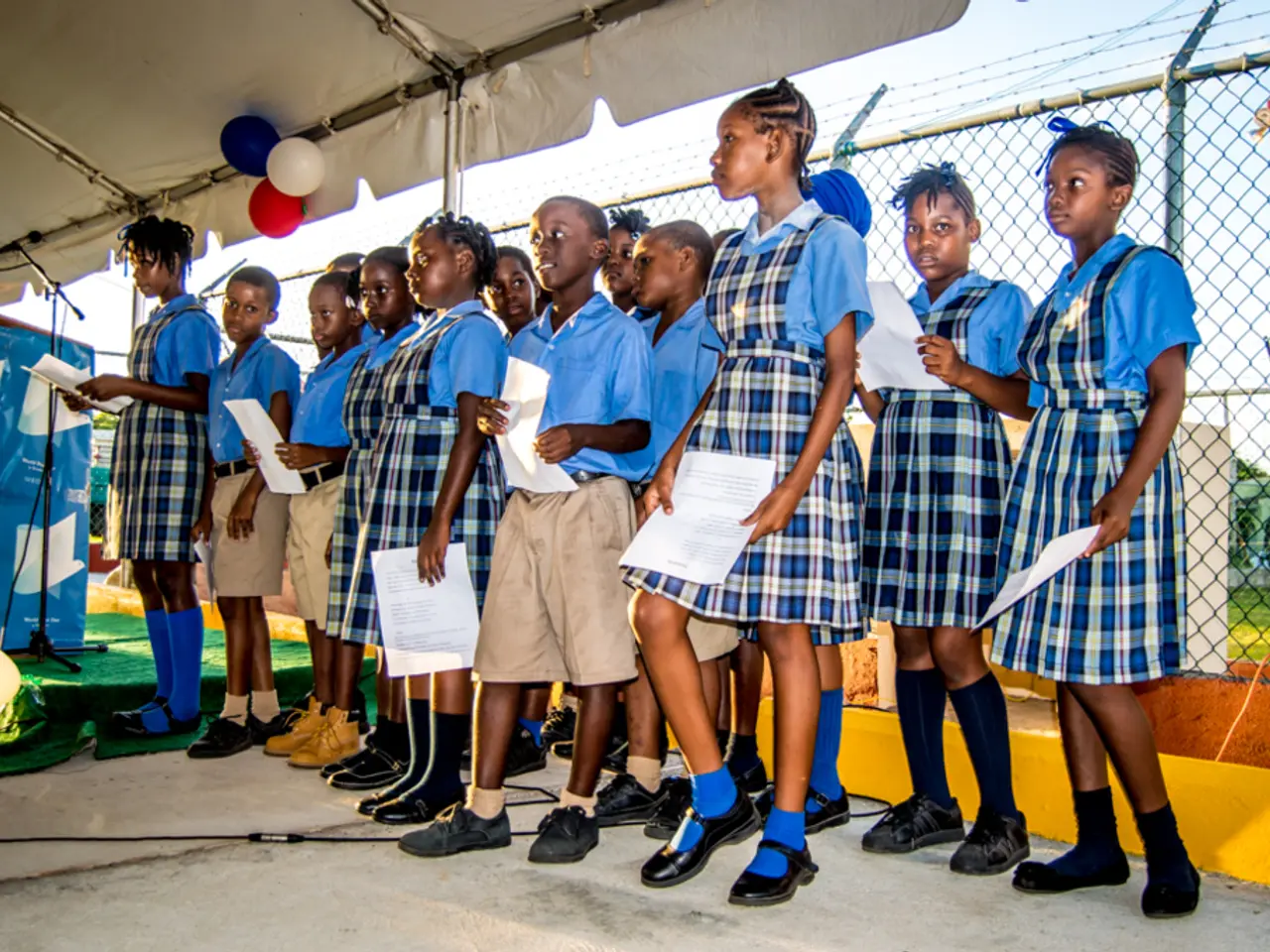Enhancing Child Vision Examinations: Real-life Example
Child-to-Child Vision Screening Project Introduced in New Zealand Schools
A unique project, known as the Vision 20/20 Project, is being implemented in New Zealand schools, with the primary objective of integrating a child-to-child vision testing toolkit. This innovative approach gives students the opportunity to test their peers' eyesight, serving as a stepping stone towards early detection of vision impairment.
The project, which has been supported and funded by various organizations, is a great opportunity to bring in more community science and provide students with a real-life, authentic experience in STEAM (Science, Technology, Engineering, Arts, and Mathematics) education. Teachers, who are ideally positioned to identify and respond to children whose learning is impacted by the need for glasses, play a crucial role in the project.
Professor Mary Butler, an occupational therapist specializing in participatory projects, is involved in the project. The project aims to create a conversation in the community about eye health, reaching parents through peer-to-peer vision screening.
Tahuna Normal Intermediate has been involved with this project for the past 2 years, and 600 year 7 students have participated in child-to-child vision testing. The students work in groups of three, with each student having a specific role (tester, recorder, testee). The project is in line with the World Health Organization's World report on vision (2019), which revolutionized the definition of visual impairment and estimated 949.4 million people worldwide who need glasses but do not have them.
The project aims to integrate vision screening tests with teaching and learning opportunities for students. For instance, a Google Slides presentation covers both the anatomy and health of the eye, stimulating open-ended questions from students about eye behavior. The secondary outcome was to develop teaching and learning opportunities for students to understand about the eye and the importance of good eye health in relation to wellbeing.
One of the challenges faced during the testing phase was space management. Solutions included having half the class work on follow-up activities while the other half tests, testing in larger spaces, and setting up testing stations. Another challenge was encouraging children to visit an optometrist after testing. Letters were sent home to parents of children who failed certain aspects of the testing.
It's worth noting that while New Zealand has robust early childhood vision screening through professional programs, there is no clear evidence from the available results that a formal, widespread child-to-child vision screening program exists or has been evaluated for effectiveness in New Zealand schools. The government's national strategic plan for Science in Society, A Nation of Curious Minds, was a joint initiative led by the Ministry of Business, Innovation and Employment, the Ministry of Education, and the Office of the Prime Minister's Chief Science Advisor.
The school leadership played a crucial role in navigating ethical review for the project and implementing a two-phase system for parental and child consent. The Vision 20/20 Project received funding through Otago Science into Action, a program under the Curious Minds initiative funded by the Ministry of Business, Innovation and Employment.
Tahuna students have created a video demonstrating how to implement peer-to-peer testing in classrooms. The project was inspired by Otago Polytechnic. If you are interested in developing or studying such a model in New Zealand schools, it may be valuable to consult directly with the Ministry of Health or educational health services for more detailed program information and potential pilot studies that are not yet published.
[1] Ministry of Health. (2021). B4 School Check. Retrieved from https://www.health.govt.nz/our-work/populations/children-and-young-people/b4-school-check
[2] New Zealand National Screening Unit. (2021). Amblyopia. Retrieved from https://www.nsu.govt.nz/screening-programmes/amblyopia/
[3] Ministry of Health. (2021). Kia Tīmata Pai. Retrieved from https://www.health.govt.nz/our-work/populations/children-and-young-people/best-start
[4] Ministry of Health. (2021). Vision screening. Retrieved from https://www.health.govt.nz/our-work/populations/children-and-young-people/vision-screening
- The Vision 20/20 Project, implemented in New Zealand schools, is not only a tool for early vision detection but also a platform for STEAM education, encouraging students to participate in real-life science activities.
- As part of the project, students are introduced to health and wellness topics related to the eye, such as the anatomy and health of the eye, which can lead to opportunities for personal growth and self-development through learning.
- Beyond eye health, the project aims to promote mental health and well-being by fostering social connections and teamwork among students through peer-to-peer vision testing.
- In addition to the health aspects, the Vision 20/20 Project also focuses on fitness and exercise by encouraging children to visit optometrists after testing, thereby contributing to their overall health and wellness. Furthermore, efforts are already being made to expand the project to include skin care and education and self-development, with the potential for future integration of these topics.




